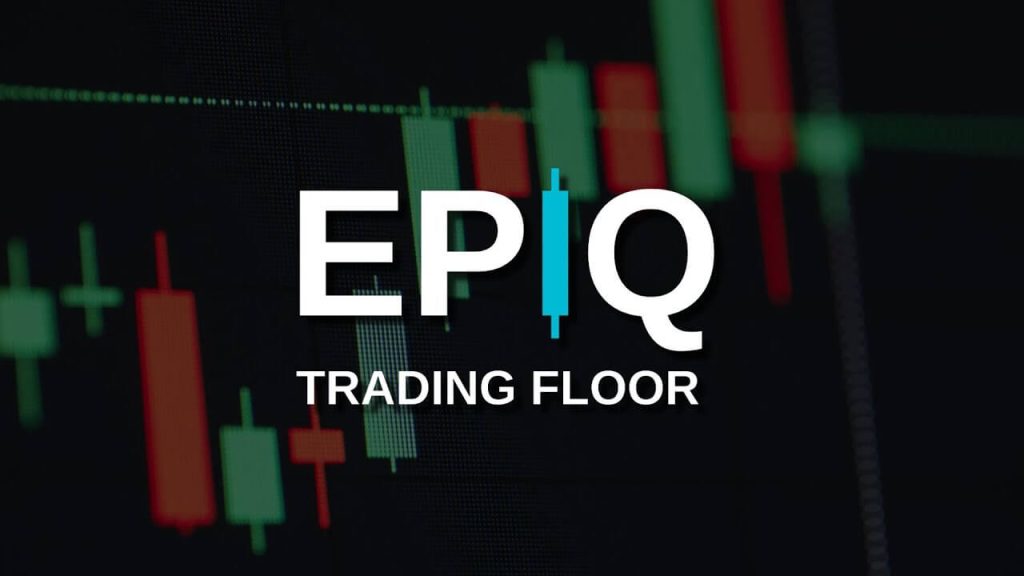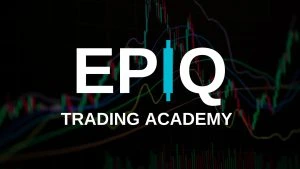En el mundo de las criptomonedas, la estaca y la minería son dos formas populares de obtener ingresos pasivos. Aunque ambas implican el apoyo a las redes blockchain, difieren en términos de procesos, costes y recompensas. Elegir el método adecuado depende de tus objetivos de inversión, conocimientos técnicos y disponibilidad de recursos.
En este blog, desglosaremos las principales diferencias entre apostar y minar, exploraremos sus pros y sus contras y le ayudaremos a decidir qué estrategia se adapta mejor a sus necesidades. También presentaremos herramientas como el Cuadro de mando EPIQ Crypto Macro para ayudarle a optimizar su estrategia de ingresos pasivos.
¿Qué es la estaca?
La estaca es el proceso de participación en una red blockchain mediante el bloqueo de una determinada cantidad de criptomoneda para validar las transacciones. Este mecanismo se utiliza habitualmente en prueba de participación (PoS) blockchain.
Cómo funcionan las apuestas
- Bloquea tus fichas: Deposite su criptomoneda en un monedero o plataforma de depósito.
- Validar transacciones: Tu participación ayuda a asegurar la red y a validar las transacciones.
- Gana recompensas: Reciba recompensas en forma de fichas adicionales, proporcionales a su importe apostado.
Ejemplos de criptomonedas estables
- Ethereum (ETH): Transición a PoS con Ethereum 2.0.
- Cardano (ADA): Conocido por su bajo consumo de energía.
- Polkadot (DOT): Ofrece interoperabilidad multicadena.
Ventajas de la estaca
- Baja barrera de entrada: Requiere conocimientos técnicos mínimos.
- Respetuoso con el medio ambiente: Utiliza mucha menos energía que la minería.
- Recompensas pasivas: Sin necesidad de supervisión constante ni hardware.
Inconvenientes de la estaca
- Fondos bloqueados: Sus fichas apostadas pueden ser inaccesibles durante un periodo determinado.
- Riesgo de mercado: Las fluctuaciones del valor de los tokens pueden afectar a sus ganancias.
¿Qué es la minería?
La minería es el proceso de validar transacciones y asegurar una red blockchain mediante potencia computacional. Este mecanismo es fundamental para prueba de trabajo (PoW) blockchain.
Cómo funciona la minería
- Instalación de equipos de minería: Utilizar hardware especializado como GPU o ASIC.
- Resolver algoritmos complejos: Compite para resolver enigmas criptográficos.
- Gana recompensas: Reciba criptomonedas como recompensa por una validación correcta.
Ejemplos de criptomonedas minables
- Bitcoin (BTC): La criptomoneda original y la más popular para la minería.
- Litecoin (LTC): Conocido por los tiempos de transacción más rápidos.
- Monero (XMR): Centrado en la privacidad y el anonimato.
Beneficios de la minería
- Alto potencial de recompensa: Especialmente para los pioneros o los mineros a gran escala.
- Descentralización: La minería es compatible con una red descentralizada.
- Recompensas líquidas: Las recompensas obtenidas pueden intercambiarse o venderse inmediatamente.
Inconvenientes de la minería
- Costes elevados: Requiere un hardware caro y un consumo eléctrico importante.
- Conocimientos técnicos necesarios: Las instalaciones mineras exigen un mantenimiento y una optimización continuos.
- Riesgos reglamentarios: Las operaciones mineras están prohibidas o restringidas en algunas regiones.

Estacar vs. Minar: Comparación pormenorizada
| Característica | Estacas | Minería |
|---|---|---|
| Consumo de energía | Bajo | Alta |
| Gastos de instalación | Mínimo (no se necesita hardware) | Alta (requiere GPU o ASIC) |
| Conocimientos técnicos | Mínimo | Avanzado |
| Recompensas | Más bajo pero estable | Potencialmente más alto pero volátil |
| Respeto del medio ambiente | Respetuoso con el medio ambiente | Alto consumo de energía |
| Bloqueo de fichas | Obligatorio en la mayoría de los casos | No es necesario |
¿Cuál es mejor para los ingresos pasivos?
El mejor método depende de sus recursos y objetivos:
Elija Estacar Si:
- Quieres una opción sencilla y ecológica.
- No tienes acceso a hardware caro o electricidad barata.
- Estás invirtiendo en criptomonedas PoS como Ethereum o Cardano.
Elija Minería si:
- Tienes conocimientos técnicos y acceso a electricidad de bajo coste.
- Te interesan las criptomonedas PoW como Bitcoin.
- Puede invertir en equipos de minería y mantenerlos.
Herramientas para mejorar su estrategia
1. Cuadro de mandos de EPIQ Crypto Macro
En Cuadro de mando EPIQ Crypto Macro proporciona:
- Información en tiempo real sobre oportunidades de apuestas y minería.
- Tendencias del mercado para optimizar su estrategia de ingresos pasivos.
- Analítica avanzada para el seguimiento del rendimiento de los tokens.
2. Carteras seguras
Proteja sus recompensas de estaca o tokens minados con carteras de hardware como Libro mayor. Estos monederos mantienen sus claves privadas seguras y fuera de línea, minimizando los riesgos de seguridad.
3. Plataformas de control
Utilice plataformas como Recompensas de las apuestas o WhatToMine para evaluar la rentabilidad de las opciones de estaca y extracción.

Cómo puede ayudar el parqué EPIQ
En Parqué EPIQEn nuestra página web, le proporcionamos las herramientas y los recursos necesarios para tomar decisiones informadas sobre el estaquillado y la minería:
- Datos en tiempo real: Supervisar las tendencias del mercado e identificar oportunidades rentables.
- Recursos educativos: Aprenda a maximizar los beneficios de las apuestas y la minería.
- Apoyo comunitario: Conéctese con operadores experimentados para compartir puntos de vista.
Inscríbase hoy para 3 días de prueba gratuita y dé el primer paso hacia inversiones en criptomonedas más inteligentes.
Conclusión
Tanto la estaca como la minería ofrecen ventajas únicas para obtener ingresos pasivos en el espacio de las criptomonedas. Mientras que la estaca es ideal para los inversores con conciencia ecológica que buscan simplicidad, la minería atrae a aquellos con conocimientos técnicos y acceso a recursos asequibles.
Para sacar el máximo partido a sus inversiones en criptomonedas, aproveche herramientas como el Cuadro de mando EPIQ Crypto Macro y proteja sus activos con carteras de confianza como Libro mayor. Únete al Parqué EPIQ hoy y desbloquee las herramientas necesarias para maximizar su potencial de ingresos pasivos.
Descargo de responsabilidad: La información proporcionada en este blog tiene únicamente fines educativos y no constituye asesoramiento financiero. El comercio y la inversión en criptomonedas implican un riesgo significativo, por lo que debe consultar a un asesor financiero antes de tomar decisiones.










Respuestas